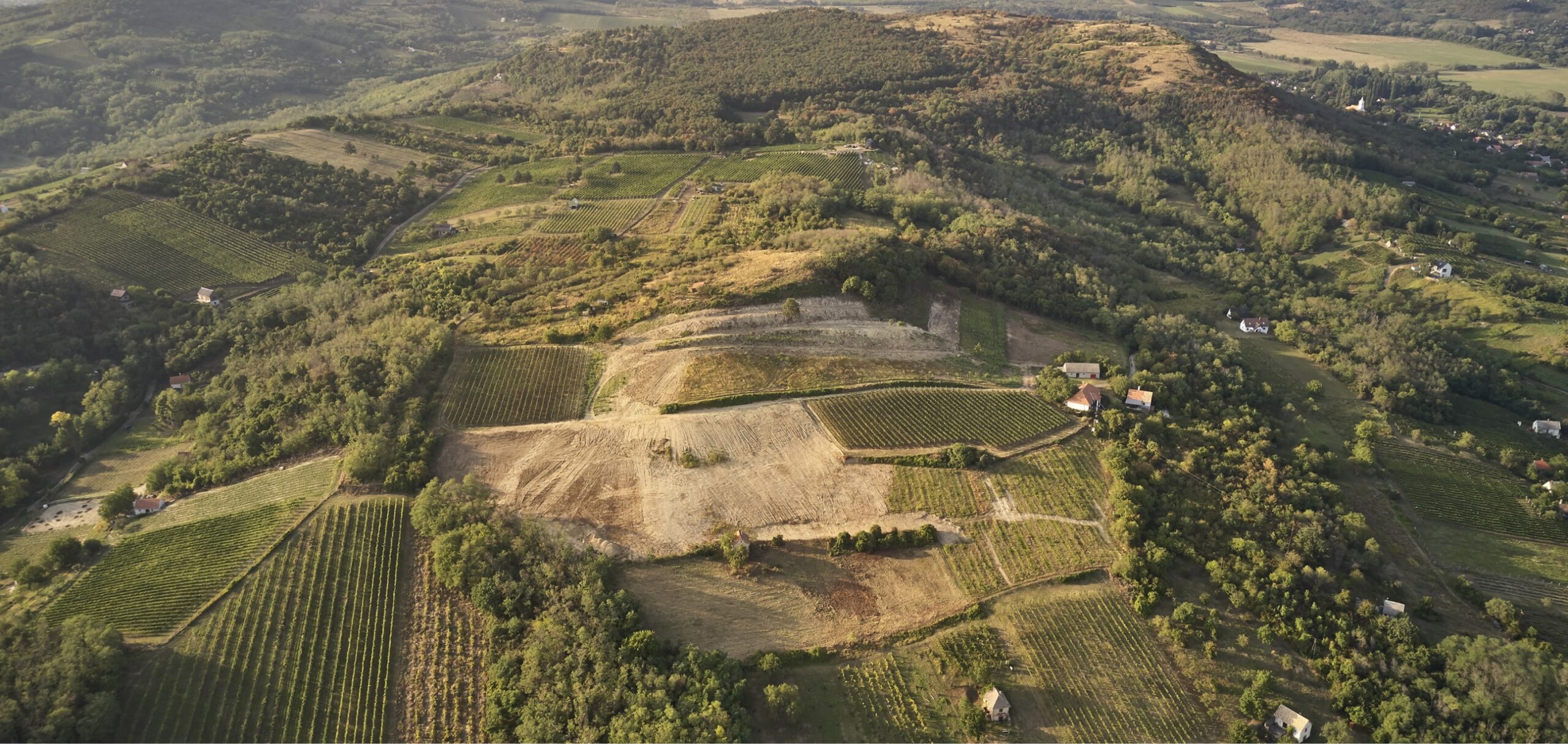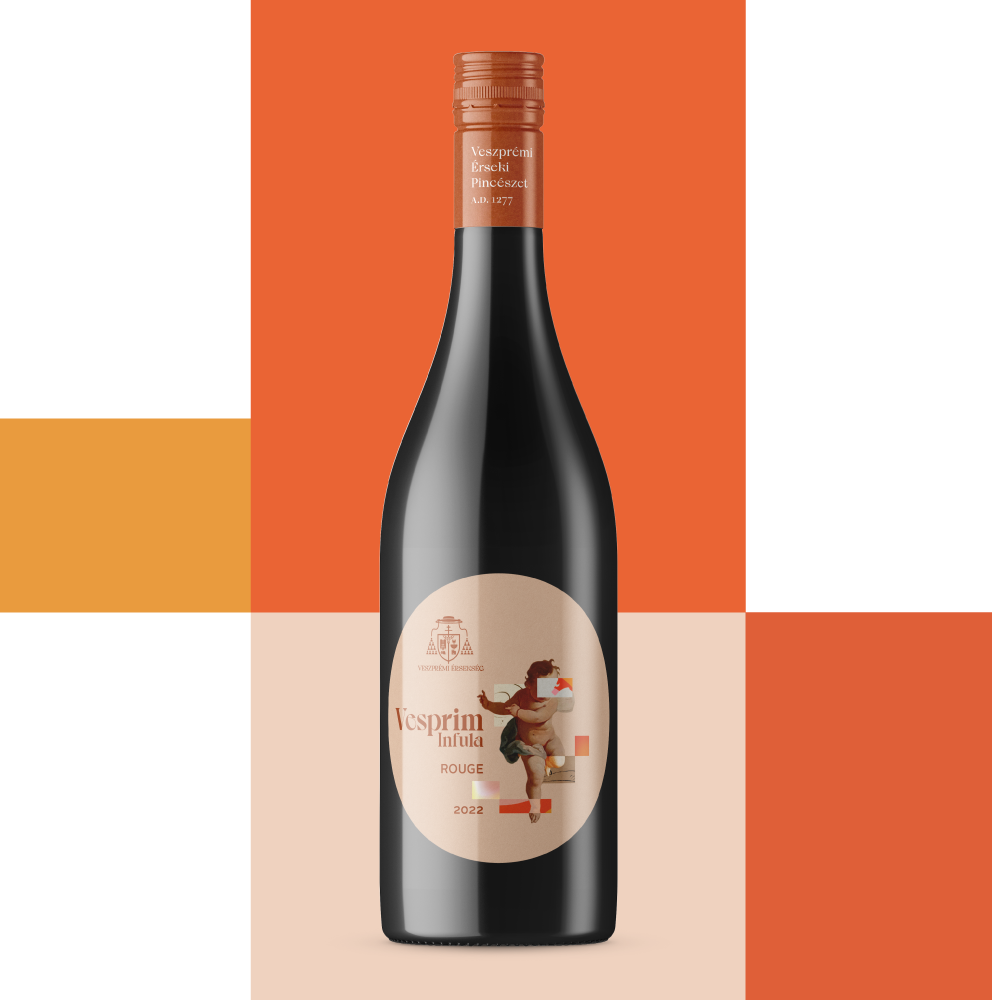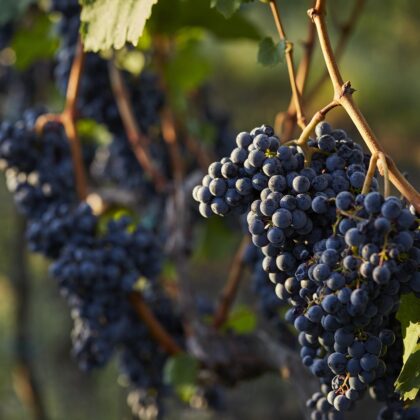VESZPRÉMI ÉRSEKI
PINCÉSZET
A.D 1277
Wines
Past, tradition,
continuity
Past, tradition, continuity. Veszprém Archdiocese (and its legal predecessor Veszprém Bishopric) has been engaged in grape cultivation and winemaking for about 750 years, since 1277. Veszprém Archdiocese is one of the 12 Roman Catholic dioceses in Hungary. Founded by King St. Stephen, as one of the earliest bishoprics in Hungary its traditions and culture go way back in time. To this day, the Archdiocese Winery carries out – within the framework of the diocese – viticulture on two estates it owns, in Felsőörs that belongs to the Balatonfüred-Csopak Wine Region, and Mindszentkálla in the Kál Basin lying in the Balaton Highland Wine Region. Winemaking is conducted using state-of-the-art techniques, equipment and know-how while also respecting traditions.






Producer areas
Mindszentkálla (Kincsesdoboz)
This estate was owned by the Chapter of Veszprém as early as the 13th century. In 1277, during an exchange of estates, it came under the control of the then bishopric and it still belongs to the archdiocese today. The so-called Püspökdomb (Bishop’s Hill) is one of the most spectacular parts of the Mindszentkálla estate. From here there is a beautiful panorama to the hills of the Balaton Highland, in fact the view stretches all the way to Szigliget. After nationalization, it took all the ingenuity of the auditor general to keep the estate in the domain of the bishopric; to this day it is one of the principal areas of the Archdiocese Winery, where viticulture is conducted over 3.5 hectares.
Mindszentkálla’s arable soil is varied and changeable: basalt/tufa, rhyolite tufa, Permian red sandstone, andesite, and marl formed on the primarily volcanic bedrock can be found here, in addition to which patches of lime the consistency of crayon and Pannon sand can be found in the soil.
The white wines from here are characterized by a unique acid structure deriving from the rich volcanic soil, a salty mineral taste, fruitiness and silkiness, combined with body and enormous potential.
In the case of the reds, particularly fruity, verging on jam-like flavours dominate, as does the rich spicy aroma.
Grape varieties
White: Sauvignon Blanc, Rajnai Rizling (Rhine Riesling), Olaszrizling (Welschriesling or Italian Riesling)
Red: Pinot Noir, Syrah, Cabernet Franc, Kékfrankos (Blaufränkisch)
Felsőörs
The history of this area goes back to the early 20th century. This was when it came into the possession of the Seminarium belonging to the Veszprém Archdiocese. Just like in Mindszentkálla, here too the cultivation of grapes and winemaking had great importance. The Felsőörs estate belongs to the Balatonfüred-Csopak Wine Region. Grapes, primarily white varieties, are grown on the estate over an area of 3 hectares.
One of the main features of the estate is the amazing panorama over Lake Balaton.
The soil at Felsőörs is primarily clay but there are patches of marl as well.
White wines originating from here typically have a fruit-heavy, mineral salty flavour.
Grape varieties
White: Sauvignon Blanc, Rajnai Rizling (Rhine Riesling), Olaszrizling (Welschriesling or Italian Riesling)


Recent
What wine to choose for the Christmas menu?
With great food, there's no shortage of excellent wines - our winery's head winemaker Antal Benesch can advise you on the right choice...
2024 will be a great year
We will continue our work in Felsőörs, planting three hectares of kékfrankos and pinot noir vines in the first round....
We came home with awards from the 2024 national and international wine competitions
We are very proud that our Mandorla Sauvignon Blanc wine was voted the best white wine of Lake Balaton this year....












